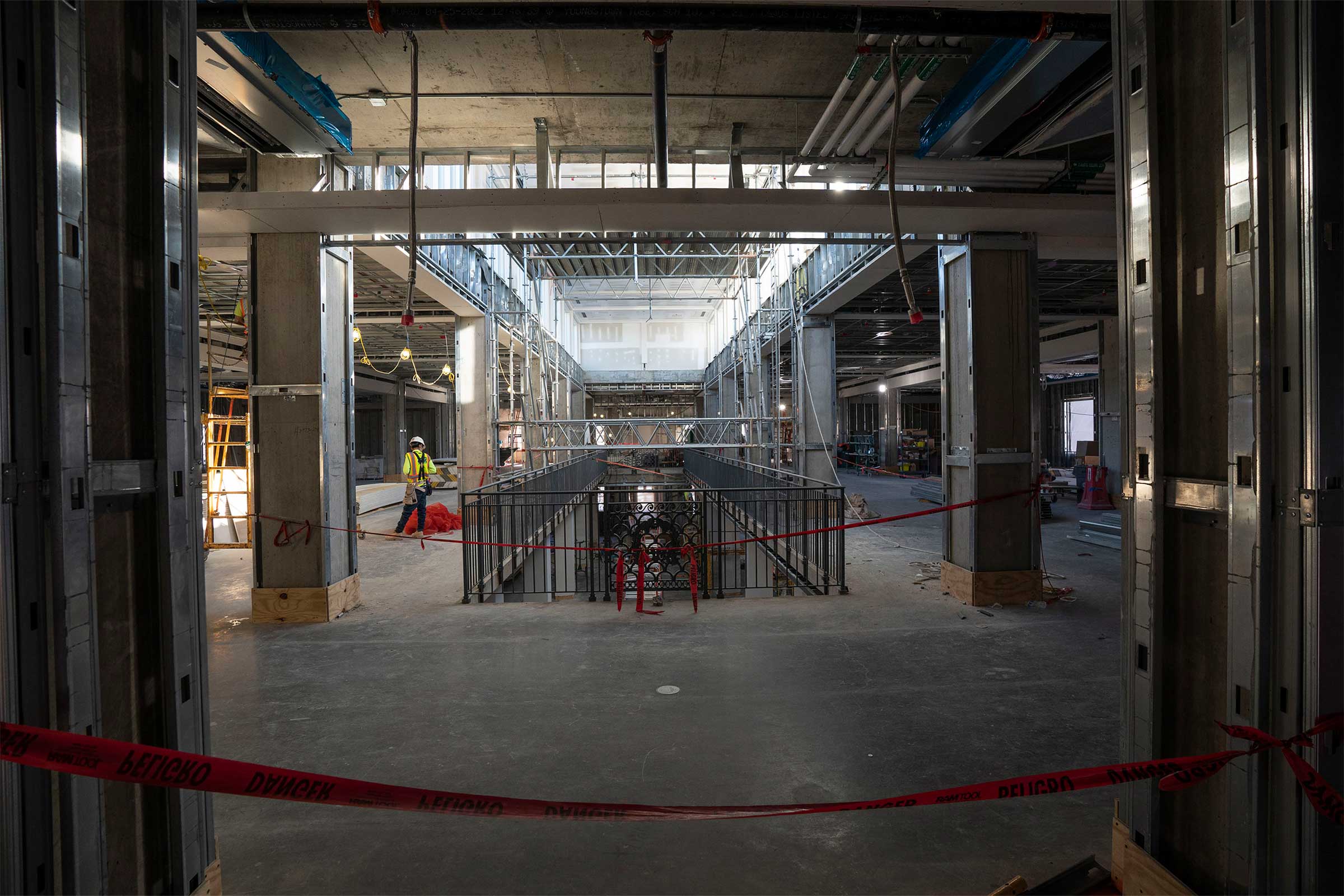“The project complies with the University’s Green Building Standards, which support our larger sustainability goals, such as being carbon-neutral by 2030,” said Kit Meyer, the project director for Facilities Management. “We worked with the Office of Sustainability to develop energy reduction goals for the project.”
Many of the library’s previous systems were inadequate by contemporary standards.
“Our goal was to develop a heating and cooling strategy that would use 25% less energy than prior to the renovation,” Meyer said. “We also were given a ‘stretch goal’ to use 50% less, a goal we have met.”
Energy savings translates into financial savings. The library is projected to reduce its energy cost by half, from $800,000 a year to $400,000.
“Lighting accounts for 33% of our energy use and the University has converted all lighting to LED, including the original chandeliers – which provides amazing returns,” Meyer said. “We removed the original 1930s fixtures and sent them to be refurbished by Crenshaw Lighting, a lighting manufacturer and restorer in Floyd that UVA has used before. They are able to not only repair and clean up the old lights, but they can install hidden LED drivers so that we can still use the historic fixture, but now with LED bulbs.”
Another key to the savings is the natural light drawn into the building. In the 1930s, when the library was built, the windows were single-pane and had no ultraviolet light protection. Over time, a lot of windows had light-blocking measures taken in order to protect the books, Meyer said.
By contrast, the new windows are double-paned, insulated and made with glass that protects from UV rays.







